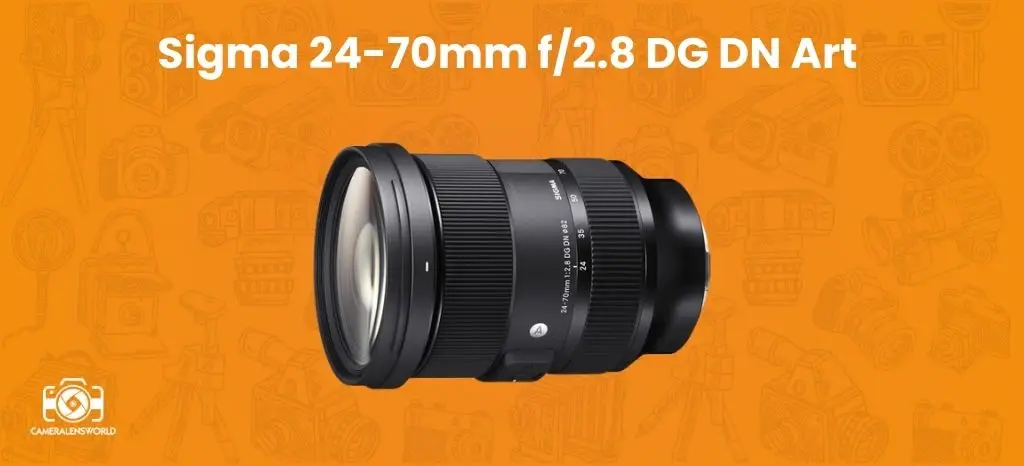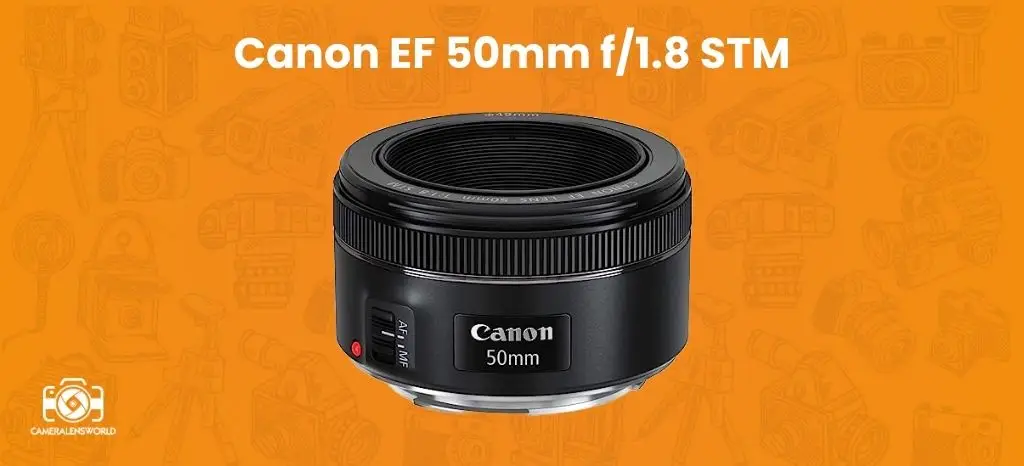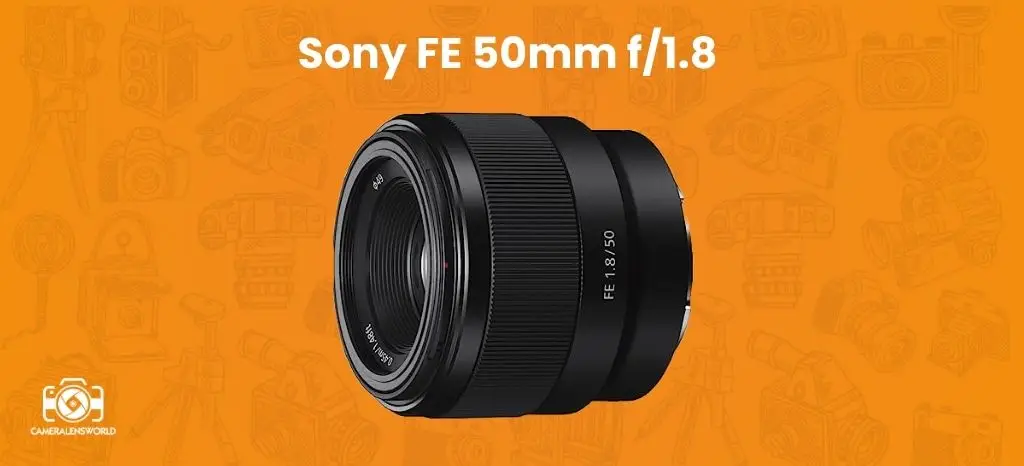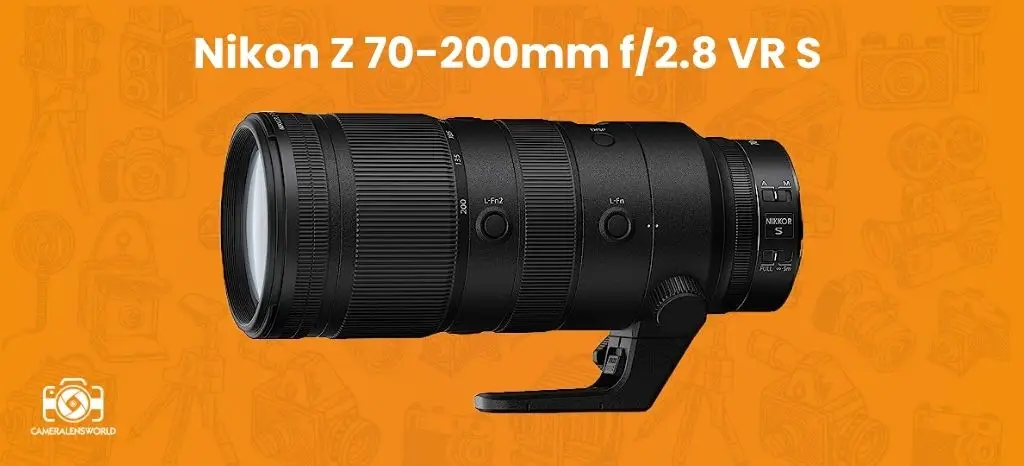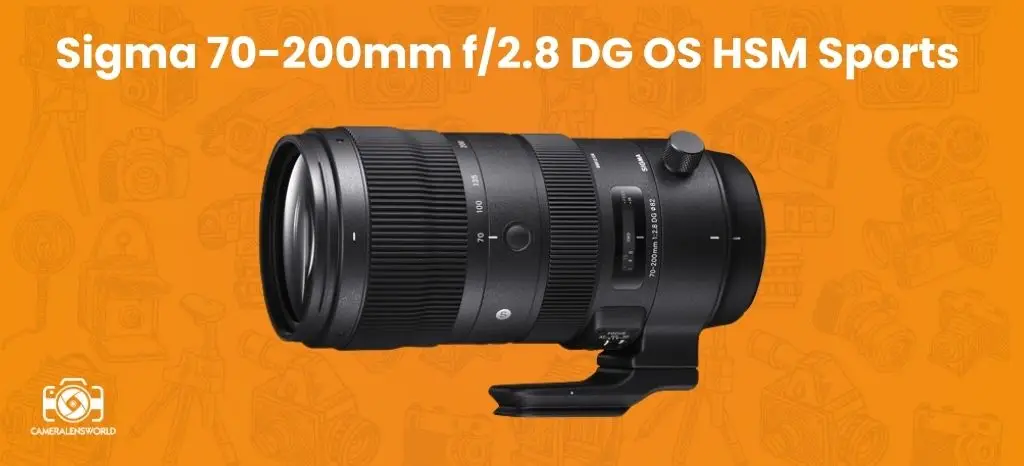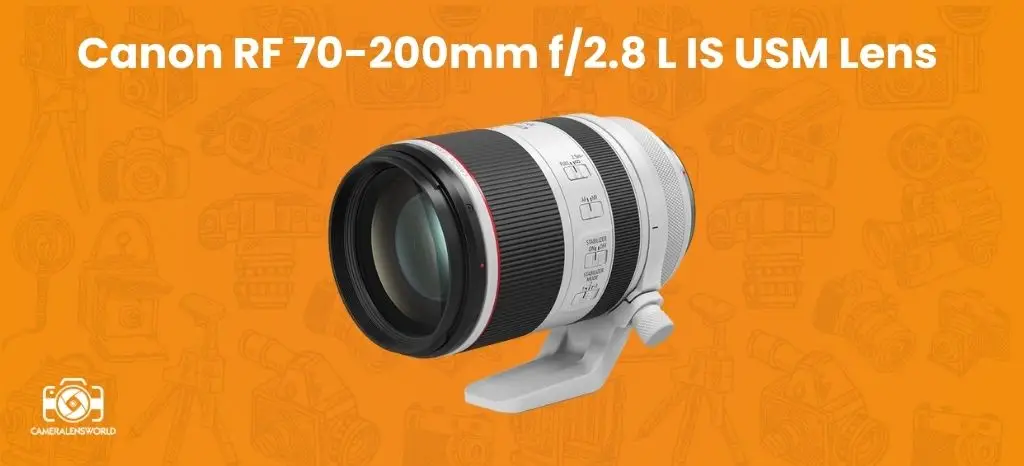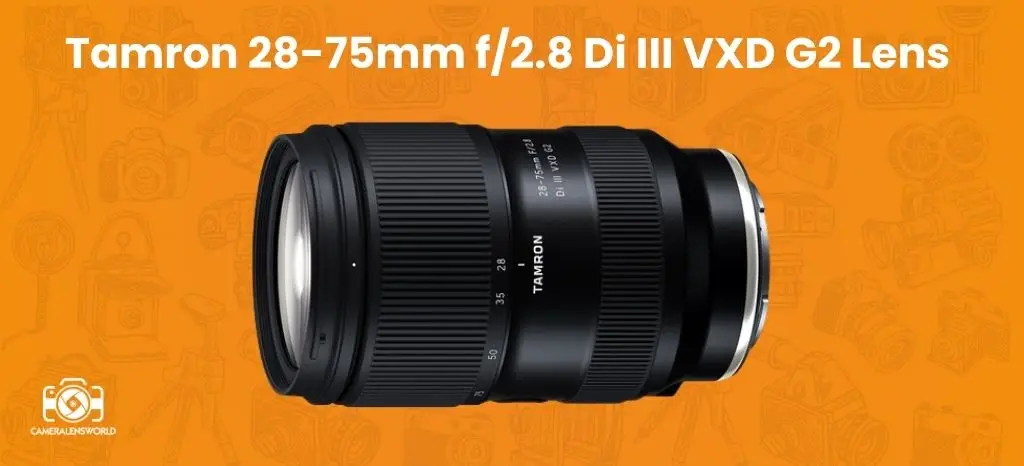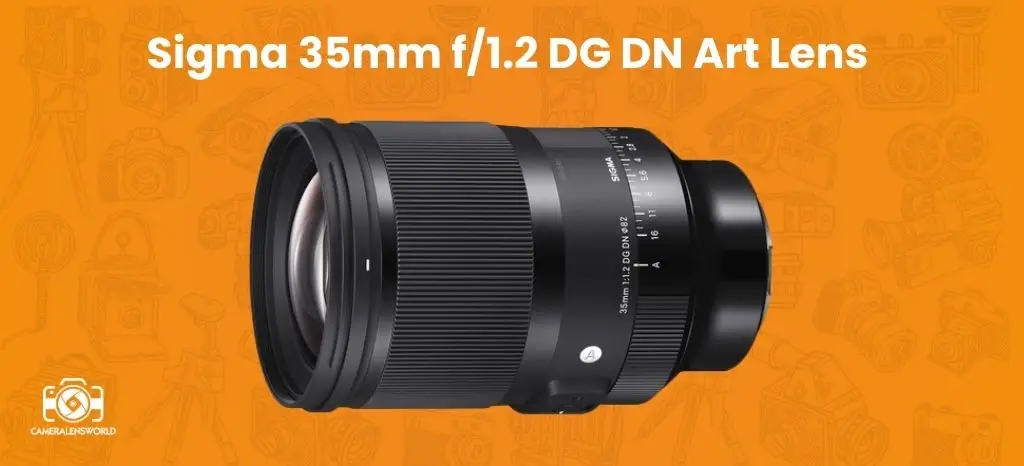
Have you ever been excited to shoot a great event but realized you have the wrong lens? That occurred to me once. Photo failures are frustrating. I learnt a lot about lens selection from it.
Even changing camera settings and composition didn’t help me in that. The photos lacked depth and color. It reminded me how vital the appropriate camera lens is for event photography.
After that, I focused more on event dynamics. I tested lenses to choose the right and best camera lens for event photography and capture its essence.
If you’re new to purchase camera lenses, “Beginner’s Guide for Buying a Camera Lens” is a good place to start. It will help you choose the right camera lens for better shooting.
Now, I want to share my insights, tips, and personal experiences with you. I’ll guide you on a journey to discover the best camera lens for event photography
11 Essential Best Camera Lens for Event Photography
Let’s have a quick review on the List of best Camera Lens for Event Photography
-
- Sigma 24-70mm f/2.8 DG DN Art
(for Sony E-mount cameras)
A valuable tool for any event photographer.
-
- Canon EF 50mm f/1.8 STM
(Canon EF-mount cameras)
Best for low-light scenes, everyday shots and beginners event photography.
-
- Nikon AF-S 50mm f/1.8G
(Nikon F-mount cameras)
Yet another entry-level lens.
-
- Sony FE 50mm f/1.8
(for Sony E-mount full-frame and APS-C cameras)
For capturing stunning portraits
-
- Nikon Z 70-200mm f/2.8 VR S
(for Nikon-Z)
An excellent night vision lens also exceptional for capturing dynamic sports, action, and wildlife moments.
-
- Sigma 70-200mm f/2.8 DG OS HSM Sports
(Canon EF,Canon EF-S, Canon EF)
Best for a variety of sports and action shots.
- Canon RF 70-200mm f/2.8 L IS USM Lens
(for Canon RF)
Best from portraits to sports photography.
- Tamron 28-75mm f/2.8 Di III VXD G2 Lens
(for Sony E-mount camera)
For stunning portraits and a wide range of photography needs.
- Sigma 35mm f/1.2 DG DN Art Lens
(for Sony E-mount camera)
Best in low light and for portraits, street, documentary and creative photography.
- Sony FE 85mm F1.4 GM (G Master) E-Mount Lens
(for Sony E-mount camera)
Best in bokeh rendering, portraits and background blur.
- Nikon NIKKOR Z 70-200mm f/2.8 VR S Lens
(for Nikon’s Z-mount mirrorless cameras)
For sports, wildlife, portraits, events, and even landscapes
Best Camera Lens for Event Photography: Detailed analysis
1- Sigma 24-70mm f/2.8 DG DN Art (for Sony E-mount cameras)
My choice
- I found this lens specifically designed for Sony E-mount cameras which offers a versatile focal range, making it an ideal choice for event photography.
- It has f/2.8 aperture, and excels in low-light conditions, allowing you to capture stunning images with beautiful bokeh.
- The lens is built with high-quality optics and features advanced autofocus capabilities for precise and quick focusing.
- Its durable construction ensures reliability even in demanding event environments.
| Brand | Sigma |
| Maximum Focal length description | 70 mm |
| Lens type | Standard lens |
| Compatible mounting | Sony E mount |
| Weight | 878.6 g |
| No.of diaphragm blades | 11 rounded diaphragm blades. |
| Lens construction | 19 elements arranged in 15 groups
(3 spherical, 6 FLD, 2 SLD) |
Reasons to buy:
- Excellent Image Quality
- Versatility
- Art Series Optics
- Advanced Autofocus
Reasons to avoid:
- Weight and Size
- Lack of Image Stabilization
In my opinion if you’re capturing group shots, portraits, or candid moments, the Sigma 24-70mm f/2.8 DG DN Art delivers exceptional image quality and sharpness throughout the zoom range, making it a valuable tool for any event photographer.
2- Canon EF 50mm f/1.8 STM
(Canon EF-mount cameras)
- The Canon EF 50mm f/1.8 STM is a prime lens designed for Canon EF-mount cameras.
- The lens features a maximum aperture of f/1.8, which allows for excellent low-light performance.
- The lens incorporates Canon’s STM (Stepping Motor) technology, which provides smooth and silent autofocus, making it suitable for both photography and video recording.
- In terms of build quality, the Canon EF 50mm f/1.8 STM features a compact and lightweight design with a plastic lens barrel.
| Brand | Canon |
| Maximum Focal length | 50 mm |
| Lens type | Prime lens |
| Compatible mounting | Canon EF |
| Weight | 159 g |
| No.of diaphragm blades | 7 diaphragm blades |
| Lens construction | 6 elements arranged in 5 groups |
Reasons to buy:
- Affordable
- Wide Aperture
- Compact and Lightweight
- STM Autofocus
Reasons to avoid:
- Lack of Image Stabilization
- Limited Focal Length
Overall, in my view the Canon EF 50mm f/1.8 STM lens excels in capturing portraits, low-light scenes, and everyday photography due to its lightweight.
3- Nikon AF-S 50mm f/1.8G (Nikon F-mount cameras)
- The Nikon AF-S 50mm f/1.8G is a prime lens designed for Nikon F-mount cameras.
- The lens’s f/1.8 maximum aperture improves low-light performance and shallow depth of focus.
- Nikon’s quiet Wave Motor (SWM) ensures quick, precise, and almost quiet autofocus. It’s ideal for photography and filming.
- The Nikon AF-S 50mm f/1.8G is well-built with a metal lens mount.
- It also features a manual focus ring for precise manual focusing if desired.
| Brand | Nikon |
| Maximum Focal length | 50 mm |
| Lens type | prime lens |
| Compatible mounting | Nikon F (FX) |
| Weight | 185 g |
| Image Stabilization | |
| No.of diaphragm blades | 7 rounded blades |
| Lens construction | 7 elements in 6 groups
(with one spherical lens element) |
Reasons to buy:
- Distortion is almost non-existent.
- Wide aperture for low-light photography.
- Compact and Lightweight
- Better option than 50mm f/1.4
Reasons to avoid:
- Limited focal length versatility
- Potential for chromatic aberration
The Nikon AF-S 50mm f/1.8G lens is excellent for capturing stunning portraits with a soft, blurred background, making your subject stand out beautifully.
4- Sony FE 50mm f/1.8
(for Sony E-mount full-frame and APS-C cameras)
- The Sony FE 50mm f/1.8 is a prime lens designed for Sony E-mount full-frame and APS-C cameras.
- The lens performs well in low-light circumstances because of its wide f/1.8 aperture.
- The lens is small and light, making it ideal for everyday photography.
- Plastic barrels and metal mounts secure the lens to the camera body.
- It is weather-sealed but not completely waterproof for extreme conditions.
| Brand | Sony |
| Maximum Focal length | 50 mm |
| Lens type | Full frame Standard prime lens |
| Compatible mounting | Sony FE
Includes both full-frame and APS-C sensor models. |
| Weight | 186 g |
| No.of diaphragm blades | 7 blades |
| Lens construction | 6 elements in 5 groups
Including 1 spherical element |
Reasons to buy:
- Affordable
- Detailed photographs
- Compatibility with Sony full-frame and APS-C cameras
- Wide aperture for low light conditions
Reasons to avoid:
- Build quality and durability
- Lack of image stabilization
This lens is best to consider for capturing stunning portraits. This can be the choice for beginners.
5- Nikon Z 70-200mm f/2.8 VR S (Nikon-Z)
- The Nikon Z 70-200mm f/2.8 VR S is a powerful telephoto zoom lens for Nikon Z-mount full-frame mirrorless cameras.
- This lens excels in low-light circumstances because of its constant f/2.8 aperture throughout the zoom range.
- Nikon’s VR (vibration reduction) technology stabilizes the lens up to 5 stops.
- The Nikon Z 70-200mm f/2.8 VR S’s weather-sealed construction and high-quality lenses provide durability in difficult shooting conditions.
- It has a smooth manual focus ring, adjustable control buttons, and a control ring.
| Brand | Nikon |
| Maximum Focal length | 200 mm |
| Lens type | Telephoto lens |
| Compatible mounting | Nikon Z |
| Weight | 1360 g |
| Image Stabilization | 5 stops |
| No.of diaphragm blades | 9 diaphragm blades |
| Lens construction | 21 elements in 18 groups
(6 ED glass, 2 aspherical lens, 1 fluorite lens, 1 SR lens, Nano Crystal, ARNEO, and fluorine-coated front lens elements) |
Reasons to buy:
- minimize chromatic aberrations and maximize image clarity.
- Versatile
- Constant f/2.8 Aperture allows for excellent low-light performance and depth of field control
- Autofocus Performance
Reasons to avoid:
- Heavy Weight
- Cost
It is an excellent night vision lens also exceptional for capturing dynamic sports, action, and wildlife moments.
6- Sigma 70-200mm f/2.8 DG OS HSM Sports
(Canon EF,Canon EF-S, Canon EF)
- The Sigma 70-200mm f/2.8 DG OS HSM Sports lens is a professional-grade telephoto zoom lens.
- Its 70-200mm lens and f/2.8 aperture excel in low-light and depth of field.
- To reduce chromatic aberrations, the lens uses specialized glass components.
- Sigma’s Optical Stabilization allows handheld photography at slower shutter rates.
- It is tough and waterproof.
| Brand | Sigma |
| Maximum Focal length | 200 mm |
| Lens type | Telephoto lens |
| Compatible mounting | Canon EF,Canon EF-S, Canon EF |
| Weight | 1.8 kg |
| Image Stabilization | 3-4 stops |
| No.of diaphragm blades | 11 blades |
| Lens construction | 24 elements in 22 groups
Includes nine FLD glass and one SLD lens |
Reasons to buy:
- well-built telephoto lens with high quality materials
- weather sealed
- Smoothly focused
- Clear and sharp images
- Unremovable tripod ring
Reasons to avoid:
- Size and weight
- Autofocus accuracy
According to me Sigma 70-200mm f/2.8 DG OS HSM Sports lens is the best option to capture a variety of sports and action shots.
7- Canon RF 70-200mm f/2.8 L IS USM Lens
(for Canon RF)
- The Canon RF 70-200mm f/2.8 L IS USM Lens is a professional-grade telephoto zoom lens for RF mount cameras.
- This lens has a wide focal length range of 70-200mm and a brilliant constant maximum aperture of f/2.8 performs well in low light and controls shallow depth of field.
- Fluorite and Super UD lenses reduce chromatic aberrations and provide clear, high-resolution pictures.
- It has a weatherproof L-series construction and quick, accurate autofocus.
| Brand | Canon |
| Maximum Focal length | 200 mm |
| Lens type | Telephoto lens |
| Compatible mounting | Canon RF |
| Weight | 1070 g |
| Image Stabilization | 5 stops |
| No.of diaphragm blades | 9 rounded blades |
| Lens construction | 17 elements in 13 groups
including 2 glass-molded aspherical, one super UD, 4 UD (one of which is UD Aspherical), SWC coating, and fluorine coating. |
Reasons to buy:
- Optical Image Stabilization (IS)
- Fast and Accurate Autofocus
- RF Mount Compatibility
Reasons to avoid:
- Size and Weight
- Cost
The Sigma 70-200mm f/2.8 DG OS HSM Sports lens offers exceptional versatility, making it an excellent choice for capturing a wide range of subjects, from portraits to sports photography.
8- Tamron 28-75mm f/2.8 Di III VXD G2 Lens
(for Sony E)
- The Tamron 28-75mm f/2.8 Di III VXD G2 Lens is a versatile standard zoom lens designed for Sony E-mount full-frame mirrorless cameras.
- With a focal length range of 28-75mm and a bright constant aperture of f/2.8, this lens offers flexibility.
- Tamron’s VXD (Voice-coil eXtreme-torque Drive) linear motor technology provides quick, accurate, and silent autofocus.
- XLD (eXtra Low Dispersion) and LD (Low Dispersion) lenses provide great picture resolution and low chromatic aberrations.
- Its lightweight, moisture-resistant design makes it portable.
| Brand | Tamron |
| Maximum Focal length | 75 mm |
| Lens type | Standard zoom lens |
| Compatible mounting | Sony E |
| Weight | 550 g |
| Image Stabilization | 3 stops. |
| No.of diaphragm blades | 9 circular diaphragm blades. |
| Lens construction | 17 elements in 15 groups |
Reasons to buy:
- Compact and Lightweight
- Sharp Image Quality
- Improved Autofocus
Reasons to avoid:
- Build Quality
- Lens Distortion
It is a good option for stunning portraits and a wide range of photography needs.
9- Sigma 35mm f/1.2 DG DN Art Lens
(for Sony E)
- The Sigma 35mm f/1.2 DG DN Art Lens for Sony E-mount is a high-quality prime lens designed for Sony mirrorless cameras.
- It features a wide-angle focal length of 35mm and a large maximum aperture of f/1.2.
- For tough situations, the lens is weather-sealed and robust.
| Brand | Sigma |
| Maximum Focal length | 35 mm |
| Lens type | Standard lens |
| Compatible mounting | Sony E |
| Weight | 645 g |
| Image Stabilization | ⅓ stops click |
| No.of diaphragm blades | 11 rounded diaphragm blades |
| Lens construction | 17 elements in 12 groups
Including 3 SLD and 3 aspherical elements. |
Reasons to buy:
- Exceptional Image Quality
- Fast Aperture
- Light weight
Reasons to avoid:
- Autofocus Performance
Best in low light and for portraits, street, documentary and creative photography.
10- Sony FE 85mm F1.4 GM (G Master) E-Mount Lens
(for Sony E)
- The Sony FE 85mm F1.4 GM (G Master) E-Mount Lens is a high-end prime lens designed for Sony full-frame mirrorless cameras.
- It boasts a focal length of 85mm and a wide maximum aperture of f/1.4.
- The weather-sealed lens protects against dust and moisture. It’s vital to remember that it’s not waterproof and should be used with caution in bad weather.
| Brand | Sony |
| Maximum Focal length | 85 mm |
| Lens type | Full frame telephoto prime lens |
| Compatible mounting | Sony E |
| Weight | 820 g |
| No.of diaphragm blades | 11 diaphragm blades |
| Lens construction | 11 elements in 8 groups.
1 XA element for astigmatism, field curvature, coma, and other spherical aberrations |
Reasons to buy:
- f/1.4 maximum aperture for good low-light performance and shallow depth of field.
- SonyFE85mmF1.4 focuses faster than Ronikon.
- It focuses quicker and more accurately than Zeiss 135mmF1.8ZA (LAE4). It also focuses quietly.
- It focuses similarly to Nikon85mmF1.4G but is noisier.
- Durability and weatherproofing for tough circumstances.
Reasons to avoid:
- It’s too hefty for travel or lengthy handheld usage.
- Comparatively expensive than other 85mm lenses.
- The focus length may limit certain photographic styles.
- Lack of image stabilization can limit handheld low-light photography.
In my opinion the Sony FE 85mm F1.4 GM (G Master) E-Mount Lens excels at producing bokeh, as well as in portraiture and background blur.
11- Nikon NIKKOR Z 70-200mm f/2.8 VR S Lens
(Designed for Nikon’s Z-mount mirrorless cameras)
- The Nikon NIKKOR Z 70-200mm f/2.8 VR S Lens is a professional telephoto zoom lens designed for Nikon’s Z-mount mirrorless cameras.
- Its continuous f/2.8 aperture provides exceptional low-light performance and shallow depth of field.
- Advanced optics provide clarity, contrast, and low distortion in the lens.
- Nikon’s VR image stabilization allows handheld photography at slower shutter speeds.
- The lens is weatherproof and sturdy, making it suitable for challenging conditions.
| Brand | Nikon |
| Maximum Focal length | 200 mm |
| Lens type | Telephoto zoom lens |
| Compatible mounting | Nikon Z |
| Weight | 1440 g |
| Image Stabilization | 5 stops |
| No.of diaphragm blades | 9 blades |
| Lens construction | 21 elements in 18 groups
(6 ED glass, 2 aspherical lens, 1 fluorite lens, 1 SR lens, Nano Crystal and ARNEO coatings, and a fluorine-coated front lens element) |
Reasons to buy:
- Wide focal length range for diverse subjects.
- f/2.8 aperture for great low-light performance.
- Sharp, distortion-free optics.
- VR for handheld camera stabilization.
- Weatherproof construction for tough circumstances.
Reasons to avoid:
- Large and heavy
- Compatibility limited to Nikon’s Z-mount mirrorless cameras, excluding DSLR users.
For me it is best to capture sports, wildlife, portraits, events, and even landscapes.
It’s worth every penny for many serious and professional photographers.
Consideration for choosing the best camera lens for event photography
1- Focal length
The optimal lens for event photography is determined by what you want to capture.
Event photographers often use zoom lenses from wide-angle to intermediate telephoto.
Event photography often uses lens lengths from 24mm to 70mm or 70mm to 200mm.
In a nutshell: before picking out a lens, consider the occasion and how you’ll be working as the photographer.
2- Image stabilization
Image stabilization prevents camera shaking in event photography.
This lets photographers use long lens lengths and difficult lighting without a tripod.
It reduces blur from tiny motions and vibrations using clever optical or sensor-shift technologies.
This tool helps capture essential moments during fast-paced events and decreases the danger of missing important photos.
Lens image stabilization ensures clear, captivating event photos.
3- Aperture
Event photographers use aperture to control depth of field and shot quality.
A wide aperture (e.g., f/1.8) lets more light into the camera, allowing quicker shutter speeds and less blurry photographs.
This larger aperture generates a narrow depth of focus, separating the subject from the backdrop, making it great for portraiture or spotlighting key features in a crowded event.
A small aperture (high f-number, like f/16) enhances depth of field, which is excellent for group photos or catching the whole image.
Event photography requires the right aperture setting for aesthetic and technical impact.
4- Auto focusing
Autofocus is vital for event photography, as it automatically adjusts focus to keep subjects sharp and clear.
With advanced technology and focus tracking, it ensures accurate focusing, even on moving subjects.
This feature allows photographers to concentrate on capturing decisive moments without the need for manual focus adjustments, resulting in sharper and more successful event photographs.
To test it as a beginner, set your camera to autofocus mode, aim at a subject, half-press the shutter button to initiate autofocus, and observe if the lens accurately focuses.
Review the resulting image for sharpness and make adjustments if necessary.
Best camera lenses for event photography FAQs
Is a 35mm lens good for event photography?
In conclusion, absolutely! The 35mm focal length is ideal for concert photography if the venue is small to medium in size and allows you to get near to the stage.
What shutter speed for event photography?
Set your camera’s shutter speed between 1/100 and 1/200; this will prevent blurring as the subjects move and interact. Take test pictures of the area beforehand to ensure the clarity of your photographs.
What size lens is best for events?
The 24-70mm f/2.8 is the ideal backup lens for photographers of weddings and events.
What is the ideal term for choosing the best camera lens for event photography ?
For event photography, prioritize a camera with strong low-light performance, fast burst shooting, reliable autofocus, durable construction, and a flexible LCD screen.
Conclusion
In conclusion, after extensively exploring various lenses for event photography, I have discovered the key factors that contribute to exceptional results. Considerations such as wide aperture for low-light conditions, image stabilization for handheld shooting, and fast and accurate autofocus are essential.
